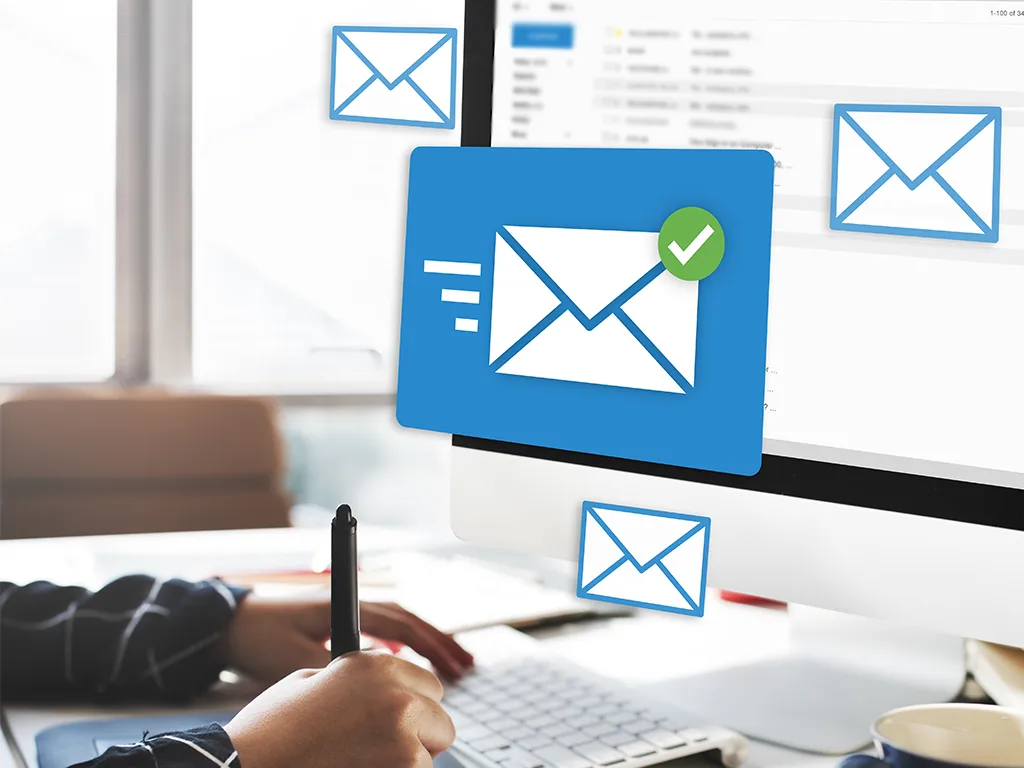Email Marketing: 5 Types to Consider
Whether you're just getting started or want to improve your strategy, this blog has everything you need to know about email marketing!

Email marketing is a powerful tool to help you reach your customers and drive conversions. It can be an integral part of your marketing mix when used correctly. However, with so many different types of emails to choose from, it can take time to decide which one is right for you. This article will discuss five popular types of email marketing campaigns. And the pros and cons of each. Helping you make an informed decision that works best for your business.
Email Newsletters
Email newsletters are a type of email marketing that can keep subscribers updated on the latest news, product releases, company developments, and more. They typically contain a mix of text and images and are sent out regularly (weekly, monthly, etc.). However, some businesses send them less frequently.
Consider your goals and target audience when deciding if email newsletters are right for your business. Suppose you’re looking to stay top-of-mind with customers and prospects or share timely information about your product or service. In that case, email newsletters can be an effective way to do so. However, remember that email newsletters work best when they’re not too salty and offer valuable content that recipients will find interesting and useful.
Account-Based Email Marketing
ABM marketing has been proven to be an effective marketing strategy, especially in B2B markets. In account-based email marketing, businesses take a strategic, account-level view of the market and tailor their marketing efforts accordingly. In this, businesses create personalized campaigns for each target account, or companies identify groups of similar accounts and create targeted campaigns for each group. This approach often used with account scoring, allows businesses to prioritize their target accounts. Both approaches have advantages and disadvantages. The best way to use abm email campaigns depends on your business goals.
Welcome Emails
Welcome emails are a crucial part of any email marketing strategy. They are the first point of contact with your subscribers and can set the tone for future interactions. There are many types of welcome emails, each with its purpose and style. Here are two of the most common welcome email types:
1. The Basic Welcome Email: The introductory welcome email is a simple message thanking the subscriber for signing up and providing a brief overview of what they can expect from your emails. This type of welcome email is best for new subscribers who may need to become familiar with your brand.
2. The Exclusive Offer Welcome Email: The exclusive offer welcome email is similar to the introductory welcome email but includes an additional special offer or discount code to entice subscribers to stay engaged with your brand. This type of welcome email works well for brands with a solid online presence and looking to convert new subscribers into customers.
Dedicated or Standalone emails
Dedicated emails, also called standalone emails, are sent to a specific audience with a particular purpose. These emails are not part of a series or campaign, unlike most email marketing campaigns. They are meant to stand on their own and achieve a specific goal. There are many different types of dedicated emails. Still, they all have one thing in common: they are focused on achieving a single goal.
When used correctly, dedicated emails can be a potent marketing tool. Whether that goal is to increase sales, promote a new product, or remind your customers of your existence, dedicated emails can be incredibly effective in reaching your target audience. However, because they are so focused, ensuring that your email is well-written and relevant to your audience is essential. Otherwise, you run the risk of coming across as spammy or unprofessional.
Lead Nurturing Emails
Lead nurturing emails are designed to build relationships with potential customers and convert them into paying customers. These emails are usually sent regularly, such as weekly or monthly, and often include valuable content, such as tips, advice, or exclusive offers. Lead nurturing emails can be highly effective in converting leads into customers, but only if they are correctly targeted and personalized. Here are a few tips to make sure your lead-nurturing emails are effective:
1. Keep your list segmented so you can send targeted emails: It will only be effective if you want to send a different email to everyone on your list. Segment your list by factors like lead source, job title, company size, etc., so you can send more personalized emails.
2. Make sure your email content is valuable: Write helpful articles, include exclusive coupons or discounts, and give practical tips to help your leads move closer to a purchase. Your leads will only convert if they see value in your offering.
Final Takeaway
Email marketing is a powerful tool to help you reach your target audience and increase conversions. With five marketing campaigns available, it’s essential to consider which style or combination of email strategies is best for your business. You should also evaluate how each will affect customer engagement, conversion rates, and other key metrics to ensure you’re getting the most out of your email marketing efforts. Take the time to learn more about each type and find the ones that work best for your goals.



